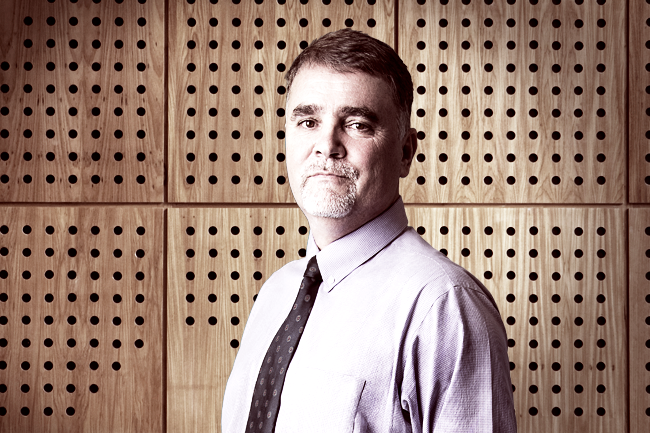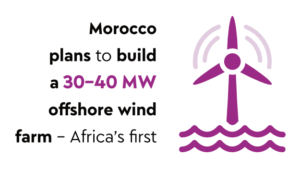On any given day in Africa, new mining environments are being explored, giving rise to particularly good growth performance for both those in the industry and the nations that have the resources the world wants. However, while multidisciplinary global engineering group DRA continues to expand its strong engineering capability within the mining and metals sector, it has heeded the needs outside of that realm by diversifying into agriculture, water, energy, ports and terminals, and related infrastructure.
Wray Carvelas, executive director and CEO of the DRA Group, explains that the organisation is entering a new era, driven by a strong business strategy that unlocks even more of its services value, reduces risk to business and shareholders, and embraces judicious investments in its global growth.
‘The projects and operations businesses we have set up globally allow us to diversify into other markets and not rely solely on the minerals sector.
‘While mining and metals will remain a key focus for DRA, diversifying into other much-needed resources markets means we can tap into the significant opportunities in Africa – particularly the sub-Saharan region – and the rest of the world. Retaining our dominant position in the African marketplace is a key part of our strategy, while strategic partnerships and acquisitions are under consideration to retain and grow our African footprint,’ he says.
The partnership and acquisition path trajectory that DRA has propelled, particularly in the past year, has been synergistic and accretive. For example, the acquisition of Met-Chem early in 2016 opened a number of doors for DRA to further its operations in francophone North and West Africa from a mining and mineral processing perspective. Another strategic purchase that feeds well into DRA’s diversification programme is that of RLH Consulting Engineers, an organisation that specialises in ports, terminals, pipelines and coastal engineering. And opening doors to the agricultural sector was the addition of the PGBI Group to its stable, which expands DRA’s ability to fully project manage engineering services in the sugar industries of Africa, China, Indonesia and Jamaica.
Its latest partnership with the Namibian-based Emcon Consulting Group allows DRA to increase its specialisations in the energy, electricity, building services and project management sectors. Emcon is highly considered for its green-building design capabilities as demonstrated by its own offices, which are powered from a grid-connected solar PV system, and for which it achieved the first Green Star (existing building) rating in Namibia.
There are compelling reasons to believe in DRA’s expertise, not least of which are projects that have been complex in nature and required a full gamut of services.
The Tweefontein Optimisation Plant in South Africa is one such example, whereby the scope entailed the replacement of three existing and ageing coal-preparation plants by a single plant. There’s also the Kibali, DRC project, which included design, procurement and project management of the plant and infrastructure (roads, dams, mine offices, stores, laydown areas and airport runway extensions), along with power backup systems and tailings deposition facilities, as well as diesel- and hydropower-generating plants.
With 12 offices on the continent and the delivery of some 2 000 projects, Carvelas points to DRA’s continued and future success as being based on the core ability to work collaboratively with clients listed on international exchanges – ‘those that have projects in Africa and elsewhere’, he says. This focus on securing preferred relationships and technical partner statuses has been a strength that has built a unified global DRA.
‘We structure along business lines rather than geographically,’ he says. ‘DRA’s projects division provides services internationally, not just regionally.’ For example, the design and contract operation offices, be those in Africa, Canada or India, facilitate knowledge-sharing that ultimately ensures DRA clients have access to a team of hand-picked experts.
‘Many of our clients are multinationals with projects and operations on a number of continents. This has translated into structuring our business to add the most value in whatever environment our clients’ projects are located.’
Two decades of experience in Africa, from its origins in South Africa in 1984, has provided DRA with a deep understanding of the most extreme of conditions.
‘The understanding we have gained in building large-scale operations in remote parts of Africa has served us well in other remote locations, like the northern-most reaches of Canada, Australia and the US.
‘We are able to deal with the complex logistical requirements of building and operating projects in all climatic conditions and within a wide range of altitudes,’ according to Carvelas.
‘Working in Africa has equipped us well to handle the challenges of many different operating environments,’ he says, referring to the numerous complex political landscapes and oft-times complicated legislative and compliance requirements of differing nations – not least of which is safety.
For DRA, this means actively caring for people, being responsible and maintaining safe work environments. So strong is this focus that it has trademarked its approach, namely People-Based Safety.
Carvelas explains that DRA strives to go beyond behaviour-based safety to putting people first. ‘By addressing the thoughts and attitudes about safety, we are able to transform behaviours and practices into those that promote safe working.
‘Our concept enhances regulatory compliance by creating a sense of ownership of the safety culture,’ he says.
People-Based Safety is extended to its clients and the communities in which it works. ‘DRA also utilises the services and skills of local companies with expat supervision. Client safety and environmental requirements are strictly adhered to and, where not available, DRA implements and complies with acceptable best practices using our own high standards.’
Innovation is a key quality of DRA, proven by its ability to synchronise engineers, planners, scientists, policy experts and GIS specialists, all of which are supported by regional and international associates. It is in this way that the group contributes to development and brings about innovative methods that consider local realities and economic circumstances using new technological solutions.

It is this very core ability combined with its experience in establishing high standards that is leading DRA into the future, and more so in advancing its concept of a ‘digital and intelligent mine’. As mining enters into the domain of ‘intelligent’, a strong corporate knowledge-base combined with a vast track record of plant design and operations is going to count, and DRA clients depend on it.
Given the group’s credibility in the market, with an information database of benchmark performance and a strong existing network and footprint, the organisation is ideally positioned to pioneer. It has identified the value of tight integration between the plant floor and enterprise business systems as a way to improve operations and maintenance performance.
‘In the greater scheme of the evolution of our business, a digital and intelligent mine is the next logical step,’ says Carvelas. ‘Real-time data will enhance our abilities to track, schedule and execute performance improvements. It enables us to intervene in real-time and take immediate and corrective action if operations deviate from plan and, in so doing, significantly improves responsiveness and overall performance.’
What DRA also highlights is that sophisticated analytics improve decision-making across maintenance and metallurgical performance. ‘This is true predictive maintenance, and predictive metallurgical performance has the ability to yield very positive results for our clients,’ says Carvelas.
‘On the capital deployment side of new projects, there are very specific advantages to event simulation, modelling and analytics when significant investment decisions are being made on new mine ventures and major expansions. Our concept will therefore prove to be very attractive to investors across the spectrum of junior to blue chip clients.’
With the organisation looking to further its African, Australian and American footprints, it seeks manageable risk environments and partnerships that will see the DRA Group retain its unparalleled advantage in all the markets it enters. Meanwhile those associated with it will find their benefits increasing just as harmoniously.

















